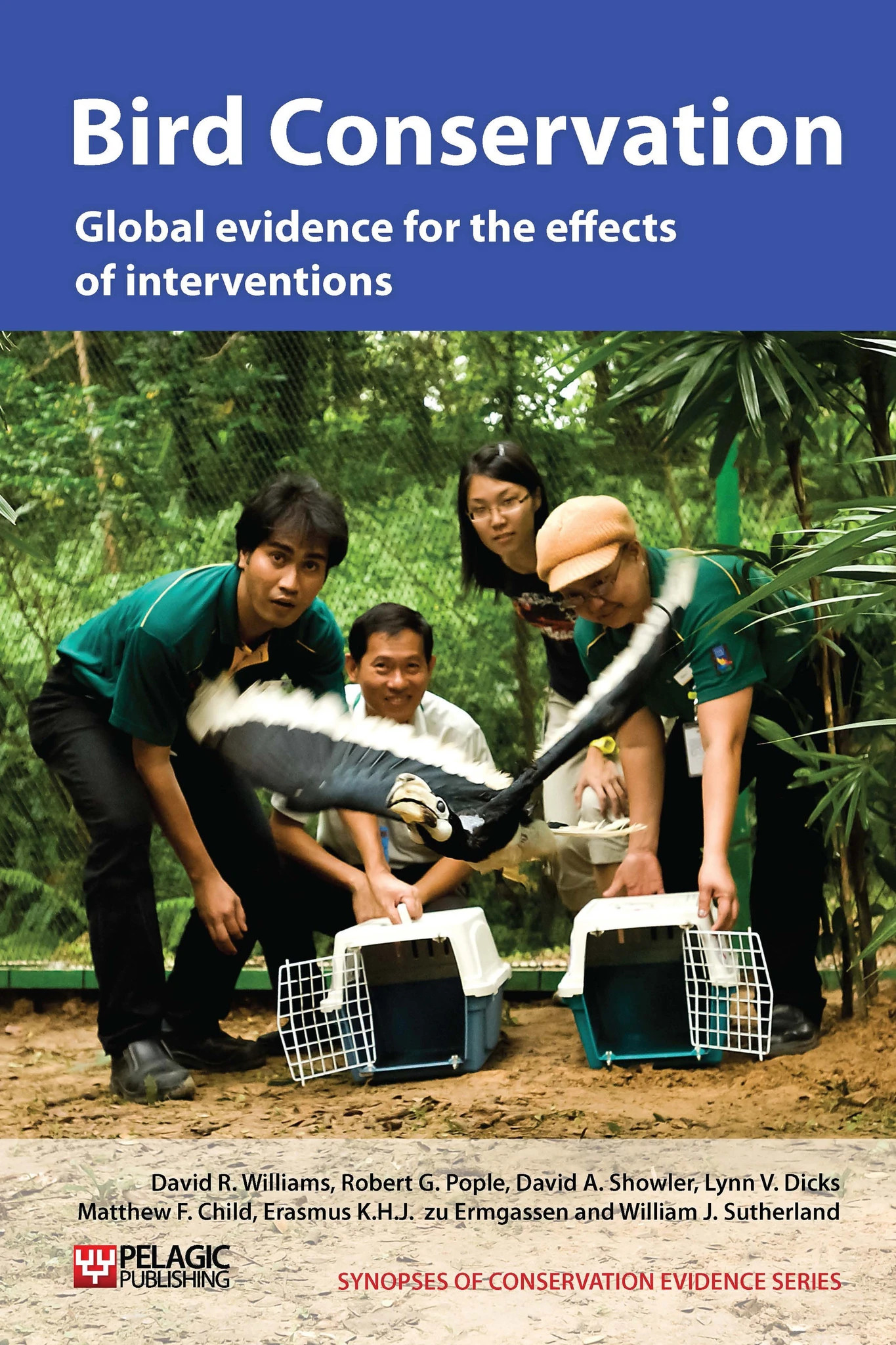Actions to conserve biodiversity
We have summarised evidence from the scientific literature about the effects of actions to conserve wildlife and ecosystems.
Review the evidence from the studies
Not sure what Actions are? Read a brief description.
Search for evidence
e.g. "frogs chytrid"
454 Actions found
Refine
Hide
454 Actions found
Download Actions
| 0 selected |
|
Order results by:
| Action | Effectiveness | Studies | Category | |
|---|---|---|---|---|
|
Provide supplementary food for songbirds to increase adult survival Action Link |
Beneficial | 34 |
|
|
|
Provide supplementary food for nectar-feeding songbirds to increase adult survival Action Link |
Unknown effectiveness (limited evidence) | 6 |
|
|
|
Can supplementary feeding increase predation or parasitism? Action Link |
Awaiting assessment | 3 |
|
|
|
Provide supplementary food through the establishment of food populations Action Link |
Unknown effectiveness (limited evidence) | 4 |
|
|
|
Use perches to increase foraging success Action Link |
Unknown effectiveness (limited evidence) | 4 |
|
|
|
Place feeders close to windows to reduce collisions Action Link |
Likely to be beneficial | 1 |
|
|
|
Provide supplementary water to increase survival or reproductive success Action Link |
Unknown effectiveness (limited evidence) | 1 |
|
|
|
Provide calcium supplements to increase survival or reproductive success Action Link |
Likely to be beneficial | 13 |
|
|
|
Translocate individuals Action Link |
Beneficial | 1 |
|
|
|
Translocate megapodes Action Link |
Unknown effectiveness (limited evidence) | 1 |
|
|
|
Translocate petrels and shearwaters Action Link |
Likely to be beneficial | 3 |
|
|
|
Translocate pelicans Action Link |
Likely to be beneficial | 2 |
|
|
|
Translocate auks Action Link |
Unknown effectiveness (limited evidence) | 1 |
|
|
|
Translocate wildfowl Action Link |
Likely to be beneficial | 5 |
|
|
|
Translocate gamebirds Action Link |
Trade-off between benefit and harms | 7 |
|
|
|
Translocate rails Action Link |
Likely to be beneficial | 3 |
|
|
|
Translocate raptors Action Link |
Beneficial | 7 |
|
|
|
Translocate herons, storks and ibises Action Link |
Unknown effectiveness (limited evidence) | 1 |
|
|
|
Translocate owls Action Link |
Unknown effectiveness (limited evidence) | 2 |
|
|
|
Translocate woodpeckers Action Link |
Likely to be beneficial | 7 |
|
|
|
Translocate parrots Action Link |
Likely to be beneficial | 7 |
|
|
|
Translocate songbirds Action Link |
Likely to be beneficial | 12 |
|
|
|
Use techniques to increase the survival of species after capture Action Link |
Likely to be beneficial | 2 |
|
|
|
Ensure translocated birds are familiar with each other before release Action Link |
Unknown effectiveness (limited evidence) | 2 |
|
|
|
Ensure genetic variation to increase translocation success Action Link |
No evidence found (no assessment) | 0 |
|
Download Actions
| 0 selected |
|

Bird Conservation - Published 2013
Bird Synopsis
Watch this search
If you are familiar with RSS feeds, please click the button below to retrieve the feed URL:
RSS feed for this searchIf you are unfamiliar with RSS feeds, we would suggest reading this BBC article.
Unfortunately, due to the number of feeds we have available, we cannot provide e-mail updates. However, you could use tools such as Feed My Inbox to do this for you.
What are 'Individual studies' and 'Actions'?
Individual studies
An individual study is a summary of a specific scientific study, usually taken from a scientific journal, but also from other resources such as reports. It tells you the background context, the action(s) taken and their consequences.
If you want more detail please look at the original reference.
Actions
Each action page focuses on a particular action you could take to benefit wildlife or ecosystems.
It contains brief (150-200 word) descriptions of relevant studies (context, action(s) taken and their consequences) and one or more key messages.
Key messages show the extent and main conclusions of the available evidence. Using links within key messages, you can look at the paragraphs describing each study to get more detail. Each paragraph allows you to assess the quality of the evidence and how relevant it is to your situation.
Where we found no evidence, we have been unable to assess whether or not an intervention is effective or has any harmful impacts.





)_2023.JPG)














